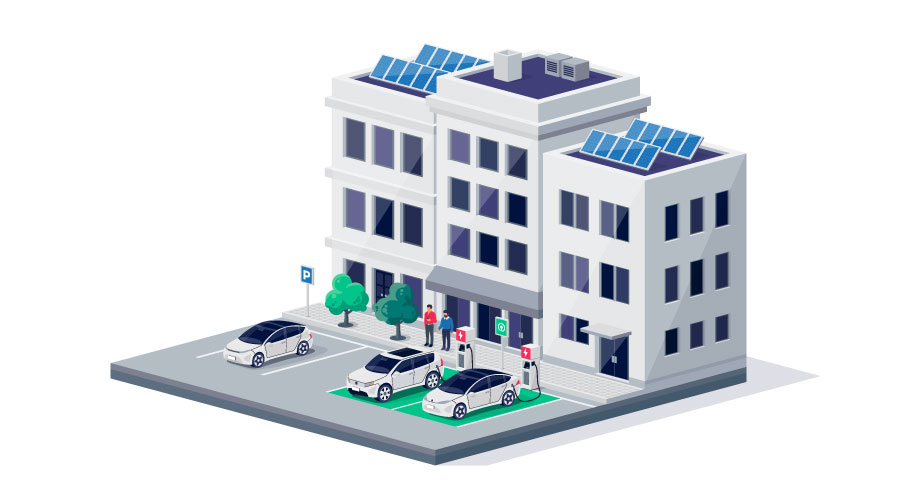To Address Staffing Challenges, Embrace Diversity
The more inclusive and diversified the workforce, the better the quality of the workforce.
By Michael Michaud, contributing writer
The Bureau of Labor statistics tells us that 86 percent of engineering jobs are held by men. This illustrates that — outside of the technical challenges posed by bringing to market technical breakthroughs — engineering workforce development and diversity is one of the most critical issues confronting the facilities management, pump, and most engineering-related industries.
Why? At a time when there is a shortage of skilled labor, the engineering profession is doing itself a disservice by not taking advantage of prospective workers who could be joining the ranks and contributing strongly: namely women — but also members of minority groups who are underrepresented in engineering. This untapped candidate pool represents an opportunity to enrich our workforce and grow our businesses.
The Boston Consulting Group, a few years back, surveyed 1,700 companies of different sizes from a variety of nations. It looked at diversity within the company and the amount of revenue generated from new products over three years. It found that more companies with above-average diversity received 45 percent of their revenue from new products, compared with 26 percent for companies with below-average diversity scores. Katherine Phillips, a professor at Columbia University, argued in an article in Scientific American that the inclusion of different — and often unexpected—viewpoints “jolts us into cognitive action in ways that homogeneity simply does not.”
According to the World Economic Forum, lack of gender diversity in research fields persists across every developed economy to one degree or another. Across the globe, for example, fewer than 30 percent of professional researchers are women. In the United States, women account for more than 55 percent of all college students. Yet the gender disparity in postsecondary science, technology, engineering, and math (STEM) education is pronounced. In 2016, women in STEM earned just 35.5 percent of bachelor’s degrees, 32.6 percent of master’s degrees, and 33.7 percent of doctorates, according to research from Catalyst, a nonprofit that improves workplaces for women.
So, what do statistics like these tell us about the state of the engineering workforce pipeline? It tells us that we have to do more to create a more inclusive environment. Not only because it is the right thing to do, but because it makes good business sense. The more inclusive and diversified the workforce, the better the quality of the workforce.
Focusing on workforce issues is especially important now because the pump industry, for example, is growing and so are others. The pumps market size surpassed $66.68 billion in 2020 and is projected to grow at around 3.4 percent CAGR from 2021 to 2027, according to Global Markets Insights. The pump sector needs new talent to support this growth, and it’s yearning for a diverse workforce equipped with a wide range of aptitudes and skills.
Collectively, those of us in industry must reach out to universities, community colleges, trade schools and high schools to make important connections with students. Doing so and growing the pipeline helps our companies and our respective industries. It also helps communities solve technical problems that exist locally. More broadly, it also enables us to help tackle some of the world’s biggest problems.
“One of the things that students really want to do is impact the world, impact sustainability,” says Mary Lynn Realff, an associate professor of materials science and engineering at Georgia Tech and the associate chair of undergraduate programs and co-director of The Center for the Study of Women, Science and Technology. “Linking what workers do every day to a bigger purpose is one of the things people want, and students often want to bring their whole self to work.”
Realff adds that training is not a “dirty word” anymore, and that job seekers now desire it. “Years ago, if somebody told you, ‘I want to hire you, and I want to put you through training forever,’ it was like, ‘Well, I just finished a degree I know what I'm doing. I want to do something.’ ” But today, she says, students turn down jobs that don’t offer training because they feel an organization is not interested in their development or skills building.
What is also discouraging, from a hiring perspective, is that even those with a technical educational background often don’t pursue jobs in technical fields. The Washington Post reports that as many as 75 percent of those with STEM degrees don’t work in their respective fields. This is mind-blowing when you consider that there is a shortage of workers with technical degrees in the United States.
Moreover, wages in these fields are up, and companies are constantly seeking qualified individuals. Still, engineering degree holders are steadily getting pulled into other industries and career paths. As stewards of our industries, it is our obligation to make it easier for more people to enter our technical industries.
The COVID-19 pandemic has “spurred feelings of liberation for millions of workers who can now envision what they want their jobs to be, not what they have been,” according to a recent article. “The Great Attrition is making hiring harder. Are you searching the right talent pools?” A story in McKinsey Quarterly, a publication of the consulting firm McKinsey & Co. says, “Companies don’t have to reinvent their employee value proposition to meet this moment. In fact, they should double down on what that proposition is — a core representation of their culture, purpose, and values — while also expanding their reach into multiple talent pools. This outreach must be creative and authentic.”
McKinsey notes that competition for talent remains fierce in light of statistics showing that in the United States, there were 11.3 million open jobs at the end of May — up substantially from 9.3 million open jobs in April 2021. “What we are seeing is a fundamental mismatch between companies’ demand for talent and the number of workers willing to supply it,” according to McKinsey. “Employers continue to rely on traditional levers to attract and retain people, including compensation, titles, and advancement opportunities. Those factors are important, particularly for a large reservoir of workers we call ‘traditionalists.’ However, the COVID-19 pandemic has led more and more people to reevaluate what they want from a job — and from life — which is creating a large pool of active and potential workers who are shunning the traditionalist path.”
The overall state of work today is clearly in flux. This should serve as a call to action to all of us in critical sectors. We need effective, skilled, and diverse workers; but it won’t happen without a dedicated effort. Not to take this seriously threatens our industry and our bottom lines.
Michael Michaud is Executive Director, Hydraulic Institute.
Related Topics:












